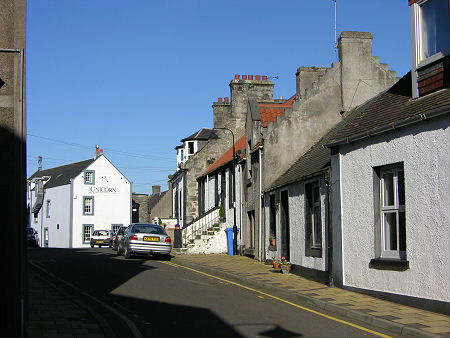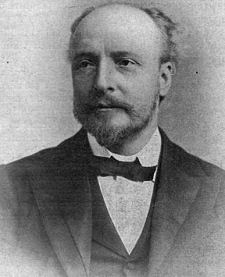 Kincardine |
Sir James Dewar, FRS, lived from 20 September 1842 to 27 March 1923. He was an eminent chemist and physicist with particular interests in low temperature chemistry, the liquefaction of gases and spectroscopy. The wider picture in Scotland at the time is set out in our Historical Timeline.
James Dewar was born in Kincardine, on the north bank of the River Forth. He was the youngest of six children and educated at Dollar Academy and Edinburgh University. At Edinburgh he was taught by Lord Playfair, before going on to become Lord Playfair's assistant. He later studied at Ghent University under August Kekulé, one of the most eminent theoretical chemists of the day.
In 1875, Dewar was appointed to the post of Jacksonian professor of natural experimental philosophy at Cambridge University. In 1877 he became Fullerian Professor of Chemistry at the Royal Institution in London. During his career, Dewar held many posts, serving as a member of the Royal Commission on London's water supply in 1893; becoming President of the Chemical Society in 1897; and President of the British Association for the Advancement of Science in 1902.
Dewar's work covered many areas of chemistry and physics. An enduring interest was in the field of spectroscopy, especially of gases. He also made an important contribution to the understanding of liquefaction of gases and low temperature chemistry. In 1891 he became the first person to produce liquid oxygen in industrial scale quantities. This led to his invention, the following year of the "Dewar flask", more commonly referred to as a Thermos or vacuum flask, in which liquid gases could be maintained at low temperatures: unfortunately he failed to patent the idea, which was exploited commercially by others. In 1889 Dewar jointly developed with Frederick Abel the explosive cordite, a smokeless alternative to gunpowder.
In the late 1890s, Dewar led the way in producing liquid and then solid hydrogen at very low temperatures, though in 1908 he narrowly failed to become the first person to produce liquid helium. From the start of the First World War his work focused on the surface tension of soap bubbles. When he died in London in 1923, Dewar was still the Fullerian Professor of Chemistry. He received many honours and awards during his distinguished career, including a knighthood in 1904. He has also had a lunar crater named after him. He was cremated at the Golders Green Crematorium.

